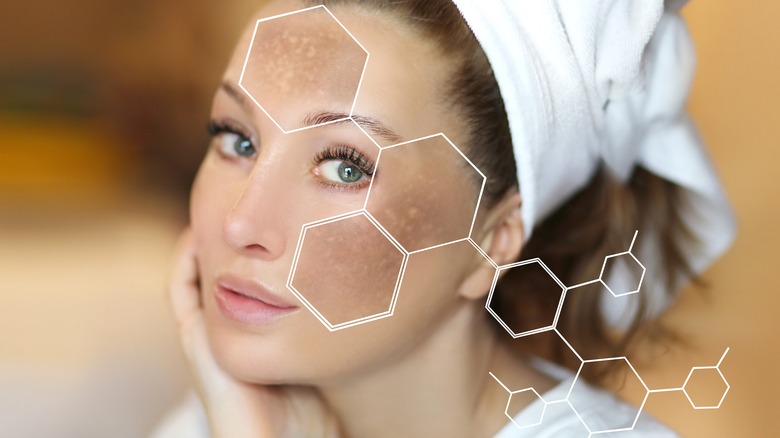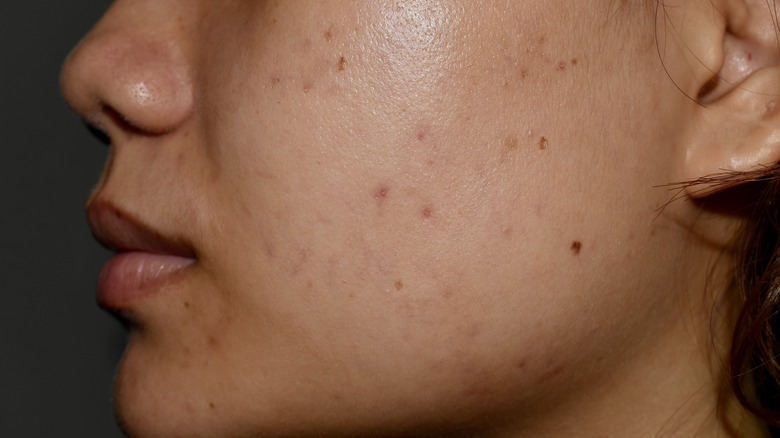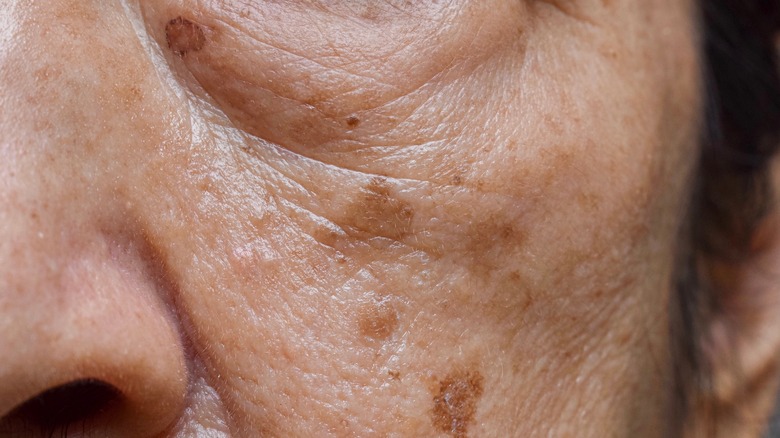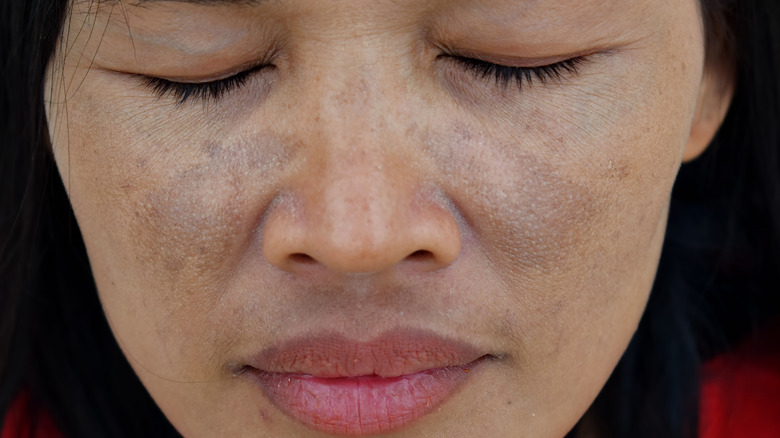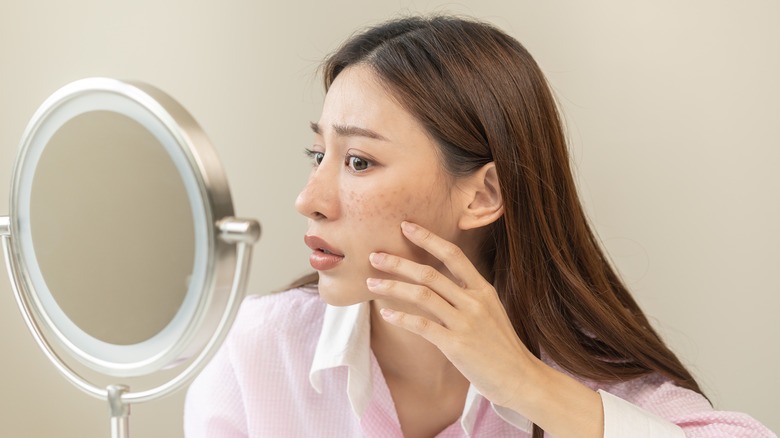Inside The Three Types Of Hyperpigmentation
The skin is the largest organ in the human body, but it's not always easy to take care of it like other organs, since it's external. It can become dry and flaky in cold weather. It can become inflamed and discolored from acne. It can crack and crease. It can sag and wrinkle. It can be affected by disorders like psoriasis, rosacea, and eczema, as WebMD explains.
Hyperpigmentation is another potential problem — a complex one, since there are several different types and causes, and sometimes, there's nothing you can do to prevent it. The word "hyperpigmentation" means an excessive darkening of the skin. This condition can be treated, but depending on the type and severity, the method of treatment can vary.
According to Healthline, the three types of hyperpigmentation are post-inflammatory, age spots, and melasma. One thing they all have in common is that they are similar in appearance, but they also have some differences.
Post-inflammatory hyperpigmentation
Post-inflammatory hyperpigmentation (PIH) is a darkening of the skin that occurs after small portions of the skin have been inflamed (via WebMD). Skin inflammation can occur as a result of acne, mosquito or other bug bites, razor bumps, an injury, and other factors. Unless the inflamed areas happen to be symmetrical on both sides of the body, PIH spots are typically asymmetrical.
PIH develops after the skin produces an excessive amount of melanin, which is a natural skin pigment. Eucerin claims melanin production is triggered when the skin regenerates, which it does naturally in response to inflammation. This type of hyperpigmentation can occur on any skin color, but it most commonly affects men and women with medium- and dark-colored skin.
The good news is, there are ways to treat this condition and prevent it from getting worse. One treatment option involves skin lighteners like hydroquinone, skin creams with retinoids, and chemical peels, according to WebMD. In addition, wearing sunblock can prevent PIH spots from getting darker.
Age spots
Age spots, also referred to as sun spots or liver spots, are another type of hyperpigmentation (via Mayo Clinic) that both men and women can develop. These spots are similar to freckles in that there can be many of them peppered on certain sections of the skin. They can appear on the face, hands, arms, back, legs, and most other parts of the skin in no particular pattern.
According to the American Society of Dermatologic Surgery, age spots appear as a result of overactive melanin cells. Sun exposure is widely accepted as a cause, since skin produces melanin naturally as a defense mechanism to ultraviolet (UV) light when it's exposed to the sun — hence the phrase "sun spots." Sometimes the production of melanin can occur unevenly or in large amounts, which is what leads to the spotted appearance.
However, some dermatologists claim age spots can form without sun exposure. Dr. Benjamin Barankin, the medical director of the Toronto Dermatology Centre, is one of them. "You cannot prevent them," he told The Globe and Mail. "It's your genetics and getting older."
Mayo Clinic claims age spots most commonly affect people older than 50 with light skin, but treatment options are available. They include medical procedures like laser therapy and microdermabrasion, over-the-counter creams, and prescription medications (via Mayo Clinic).
Melasma
Melasma is the third type of hyperpigmentation. It's a condition that causes the skin to produce brown or gray spots, but the American Academy of Dermatology Association (AAD) claims the exact cause of the condition is unknown.
What is known is that it mostly affects women, and there are some potential triggers, like sun exposure, certain medications, pregnancy, and thyroid disease. There are also some women who are more at risk for the condition, including women who have tan or brown skin and those in their 20s and 30s. The condition can also be genetic; women who have biological relatives with melasma are more likely to develop it themselves than those who don't.
One interesting attribute of melasma spots, compared to other types of hyperpigmentation, is how they're distributed on the skin. A journal article published by the National Library of Medicine states that melasma spots are symmetrically spread out, usually on the face.
Melasma can be treated with prescription medications, chemical peels, laser therapy, and skin products with hydroquinone, to name a few options. However, the condition may go away on its own, as the AAD explains.
How do the three types compare?
Post-inflammatory hyperpigmentation (PIH), age spots, and melasma are the three types of hyperpigmentation, all of which involve the development of dark patches on the skin. This darkening occurs when the melanin cells become overactive. PIH and age spots can affect men and women, but melasma mostly affects women.
People with medium or dark skin are more likely to develop PIH or melasma while people with light skin are more likely to develop age spots. PIH can affect anyone at any age, age spots typically affect people over 50, and melasma typically affects women in their 20s and 30s.
Living with hyperpigmentation can be difficult for some people, especially if there is an excessive amount of spots on exposed parts of the skin. Over-the-counter, prescription, and dermatologist treatment options are available to treat all three types of hyperpigmentation, and wearing sunblock can prevent them from getting worse.
